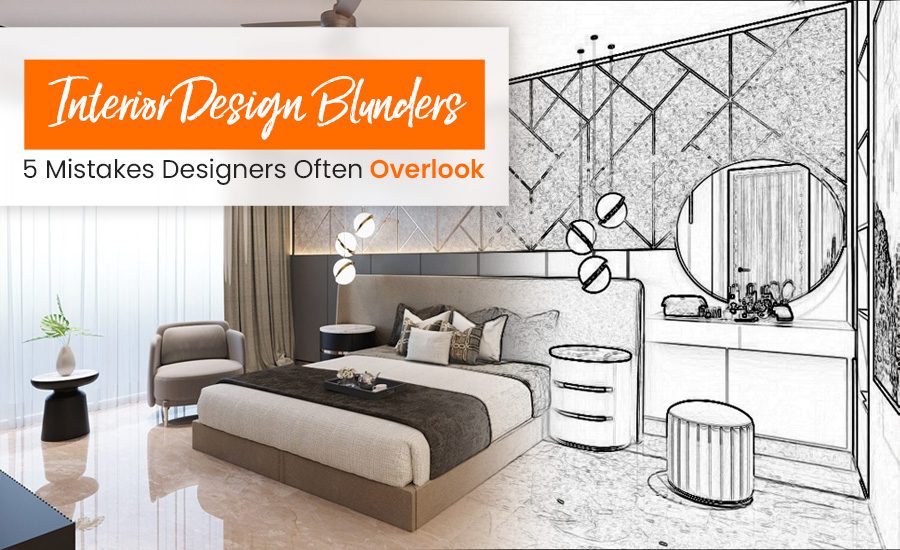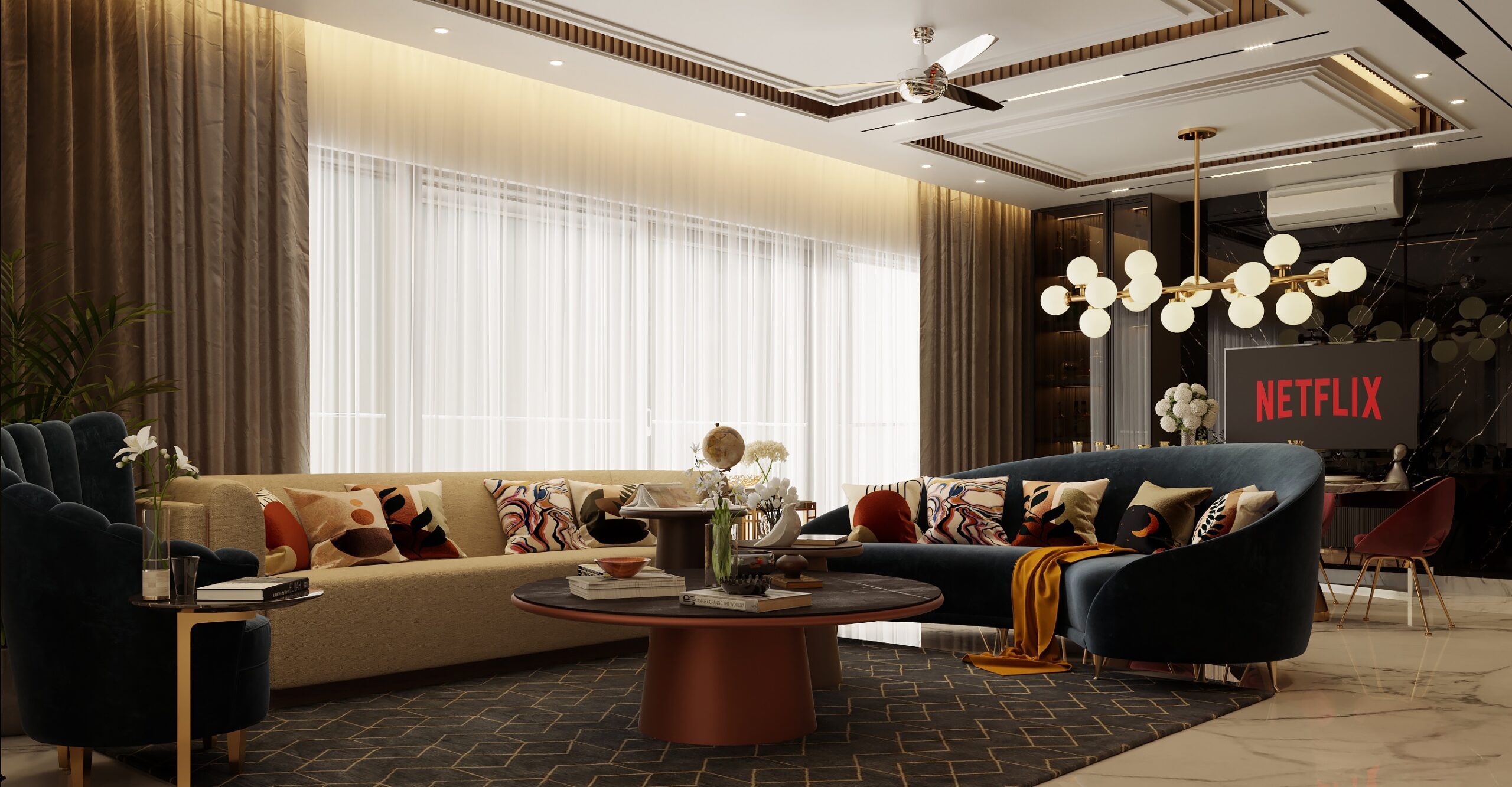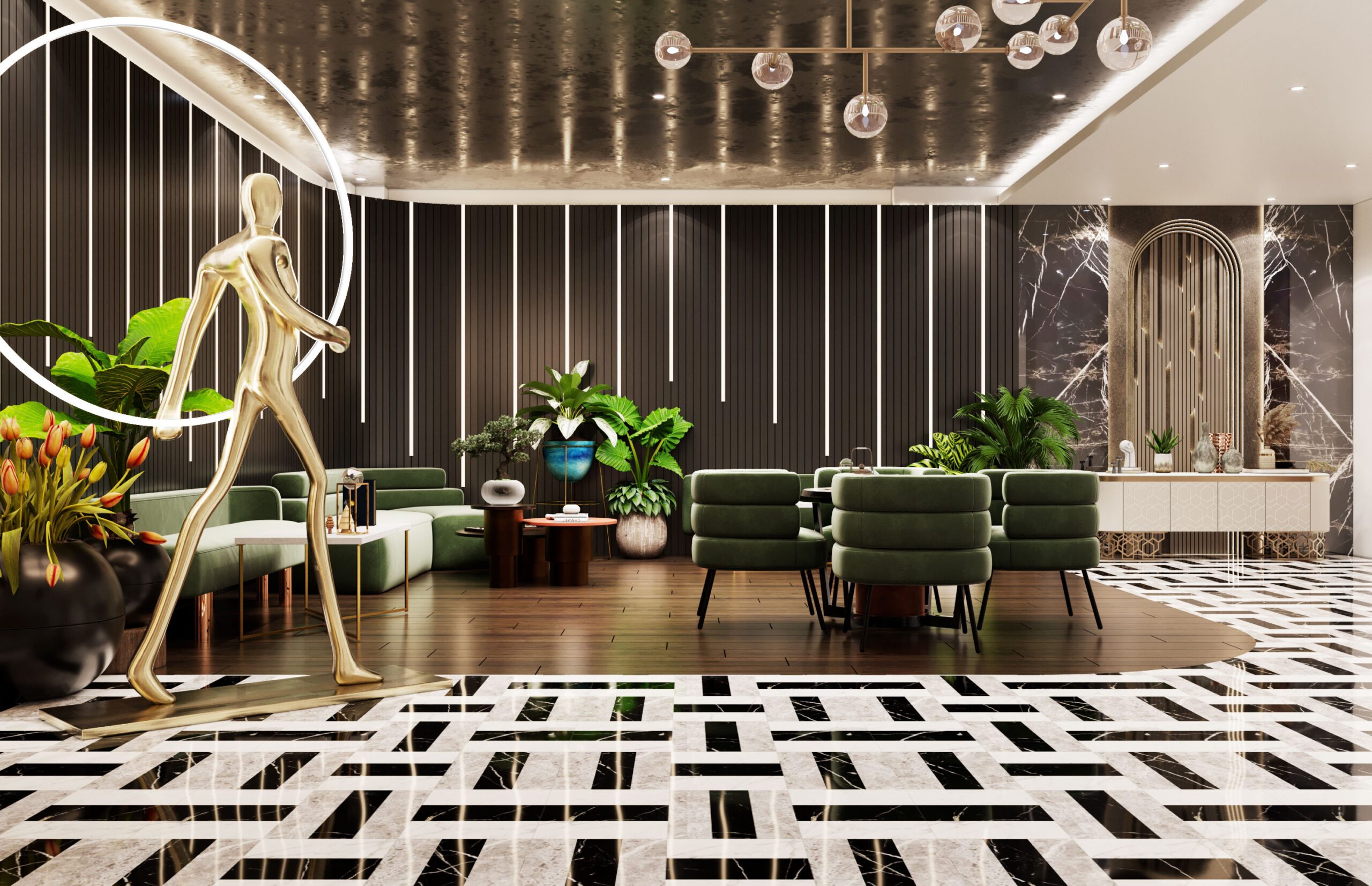
Interior Design Blunders: 5 Mistakes Designers Often Overlook
Interior design is an art form that combines creativity, aesthetics, and technical skills to transform spaces into visually captivating and functional environments. Just like a painter uses colors and textures to create a masterpiece on a canvas, interior designers utilize various elements to bring life and personality to empty rooms. Interior designers utilize color, texture, form, lighting, and various artistic elements to craft unique and personalized environments that evoke emotions, enhance experiences, and reflect the client’s individuality. Through their artistic vision, technical expertise, and attention to detail, interior designers transform blank canvases into captivating works of art that enrich our daily lives.
While skilled designers have an eye for detail and possess extensive knowledge, there are certain mistakes that even the best among them tend to overlook. In this blog, we will explore five common blunders that interior designers often make and offer insights on how to avoid them.
1. Inadequate Lighting:
Lighting plays a vital role in enhancing the ambiance of a space, yet it is often underestimated or overlooked by designers. Poor lighting can make even the most beautifully designed room appear dull and uninviting. It is essential to consider natural light sources, artificial lighting fixtures, and their placement to create a well-lit and welcoming atmosphere. Incorporating a variety of lighting options, such as ambient, task, and accent lighting, allows for flexibility and adds depth to the space.
2. Ignoring the Functionality:
While aesthetics are crucial, functionality should never be compromised. Designers may get carried away with trendy furniture and decor choices, forgetting to consider the practicality of the space. Each room should be designed with its intended purpose in mind, ensuring that furniture placement, traffic flow, and storage solutions align with the occupants’ needs. A well-designed space not only looks good but also functions seamlessly for its intended use.
3. Neglecting Scale and Proportion:
The scale and proportion of furniture and decorative elements within a room are fundamental aspects of interior design. Choosing pieces that are either too large or too small in relation to the space can throw off the visual balance and make the room feel awkward. It is crucial to carefully consider the dimensions of furniture, rugs, artwork, and other elements to ensure they harmonize with the overall scale of the room. Balancing proportions creates a cohesive and pleasing environment.
4. Lack of Color Cohesion:
Color has the power to transform a space and evoke specific moods and emotions. However, using color without a well-thought-out plan can lead to disastrous results. Designers sometimes overlook the importance of color cohesion and end up with a chaotic or monotonous color palette. It is essential to consider the room’s purpose, natural lighting, and existing elements when choosing colors. Creating a color scheme that complements the space, promotes harmony, and highlights key features will result in a visually pleasing design.
5. Insufficient Attention to Detail:
The smallest details can make a significant impact on the overall design. Designers can often overlook minor details such as hardware selection, trimmings, or finishing touches, diminishing the overall quality of the project. Paying attention to these finer points demonstrates a commitment to excellence and elevates the design from ordinary to extraordinary. Every element, from door handles to curtain rods, should be carefully selected and considered as part of the cohesive design vision.
Interior design is an intricate blend of creativity, functionality, and attention to detail. While designers possess immense talent, they can still fall prey to certain blunders that affect the overall success of their projects. By being mindful of lighting, functionality, scale, color cohesion, and attention to detail, designers can avoid these common mistakes and create stunning spaces that cater to the needs and desires of their clients. Remember, a well-designed interior not only looks visually appealing but also enhances the lives of those who inhabit it.
wagmadesigns
Best Interior Designers in Gurgaon, Wagma Designs is considered among the Top Interior Design companies in Gurgaon, Delhi NCR, and all over India owing to its quality Interior Design services, and winning designing strategies. With a team of proficient interior designers and skilled hands, we bring the best home interior design that transforms your creativity into reality.


